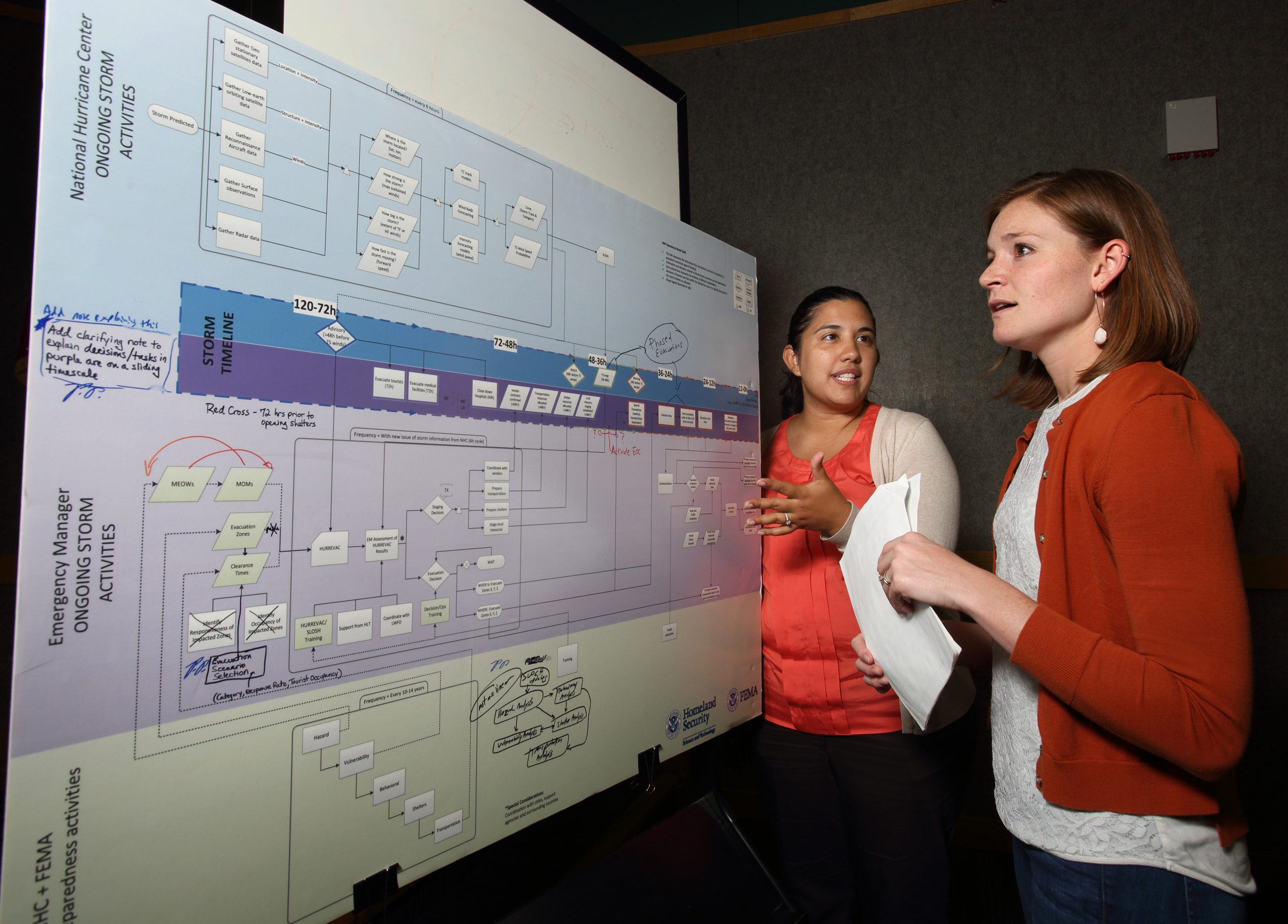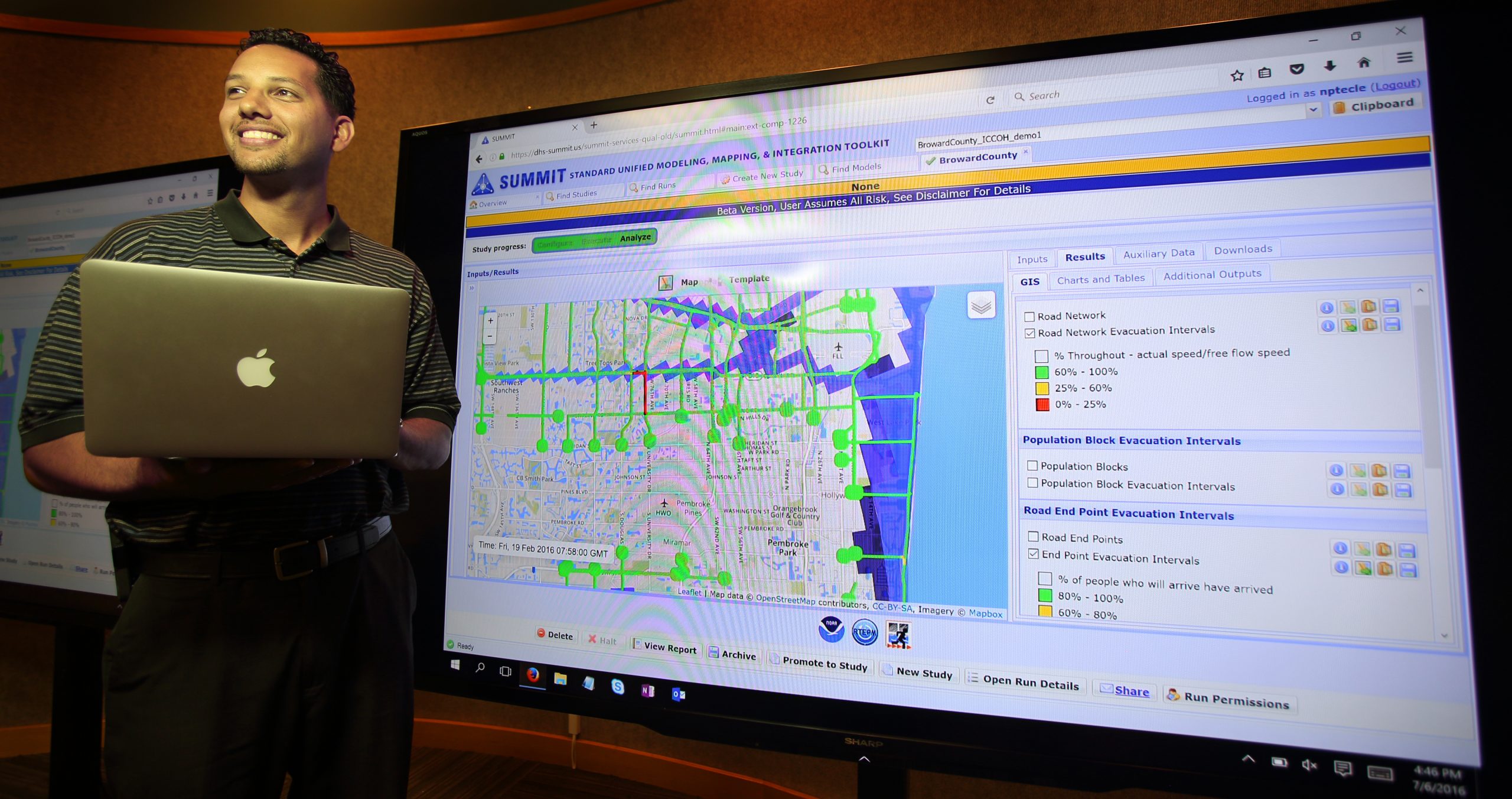LIVERMORE, Calif. – When a hurricane approaches landfall, local, state and tribal governments must work together to decide whether and how they should evacuate large populations to save lives. Emergency managers must make quick decisions, often with outdated information and computer models.

To ensure that emergency officials are better prepared to respond efficiently, researchers at Sandia National Laboratories are compiling insights from the National Hurricane Program Technology Modernization working group on hurricane emergency management into an improved guidance document. The goal of the working group is to bring new technologies into the National Hurricane Program.
Sandia research and development manager Nerayo Teclemariam, who oversees the project, said team members have been using Sandia capabilities, such as the Standard Unified Modeling and Mapping Integration Toolkit (SUMMIT), for the work.
Built on decades of modeling and simulation experience

“The work is built on our deep history of modeling and simulation at Sandia, which began as a part of our nuclear weapons mission and has evolved over time to support a broader set of national security missions,” Teclemariam said. “We are making significant contributions to the program including developing general guidance for local and state emergency officials who make critical decisions during hurricane evacuations.”
Funded by Department of Homeland Security Science and Technology and the Federal Emergency Management Agency (FEMA), Sandia has been working on four areas of the project including developing guidance for emergency responders; creating a hurricane evacuation study (HES) tool; establishing metrics for evaluating the hurricane planning and response processes; and evaluating infrastructure modeling to improve how well the HES tool makes quick and accurate evacuation recommendations and identifies infrastructure that can be made better able to withstand hurricanes.
“What we’ve been doing over the past couple of years is helping the overall program figure out how to improve the technology they use in deciding when to evacuate in the event of a hurricane,” said Sandia researcher Trisha Miller, who helped lead the project. “We are adding a lot of efficiency to their planning process and that in turn makes their decision more up to date, more accurate and more relevant to the actual storm that they’re facing.”

Developing guidance
Before creating the improved guidance document, Sandia conducted more than 50 interviews with emergency managers, regional planners, federal stakeholders, tool developers and others with a role in the program. By analyzing the interviews, researchers got a sense of the roles of emergency planners, the challenges they face and what has and hasn’t worked before and during evacuations.
“Out of that gap analysis we came up with seven high-level directions or areas where the program could improve their process by inserting new technologies,” Miller said. “We then worked to further identify the technology needs and define the technology requirements. What has evolved is the new methods and technologies we’ve delivered to the program.”
The guidance document provides a framework that helps emergency planners across the program to help them develop localized hurricane response plans, hurricane evacuation studies and post-storm assessments.
“The guidance document provides a huge benefit to the program because it enables emergency managers across jurisdictions impacted by hurricanes, from New York to Florida to Texas and even Hawaii, to share best practices and lessons learned for evacuation decision-making,” Miller said.
Hurricane evacuation study tool improves efficiency, lowers costs
The main focus of the HES is to help identify evacuation zones in a given area at risk for hurricanes and estimate how long it may take the population to evacuate. The tool uses information on roads systems, population distribution and potential storm conditions.
“Through the technology modernization effort Sandia was able to develop the HES tool to improve the efficiency and cost-effectiveness of the HES process,” Miller said. “This means that jurisdictions will be able to update their HES much more frequently, resulting in better decision-making and ultimately lives and dollars saved.”
Updated information is critical to the evacuation decisions that emergency managers make during real storms. Evacuation studies are expensive and time-consuming. As a result, some jurisdictions don’t update their plans for 10 to 15 years.
“We wanted to increase that frequency of how often the plan is updated,” Teclemariam said. “We need to take into account the latest developments in states including changes in populations, changes critical infrastructure, new roads and traffic patterns.”
By updating the technology, the Sandia team estimates a typical evacuation plan will be completed about 70 percent faster and two-thirds cheaper.
Validating the HES tool
Sandia led two pilot studies with working group members from North Carolina and New York City to validate the HES Tool process.
“Both North Carolina and New York City were in the process of updating their HES using the existing process during the pilots,” Miller said.
The Sandia team met with their pilot partners in their respective locations to compare their HES undertaking with the process being developed in the HES tool. The pilot studies helped improve the HES tool and feedback on the diverse needs of different regions hit by hurricanes.
“We have built something that can offer a lot of benefit, and so being able to follow through and see that come to fruition will be really nice,” Miller said. “We are very encouraged with what has been built to date and the interactions that we have had.”
Sandia will be handing off the work to partners at the Massachusetts Institute of Technology Lincoln Lab where the planning tool will be integrated with the response tool developed there.
The integration of the tools will greatly benefit the National Hurricane Program, Miller said.
“The key thing that we’re bringing to the project, and hopefully that the end users really see as a benefit, is that they can update their plans and understanding of when to make that evacuation decision on a much more regular basis,” she said.